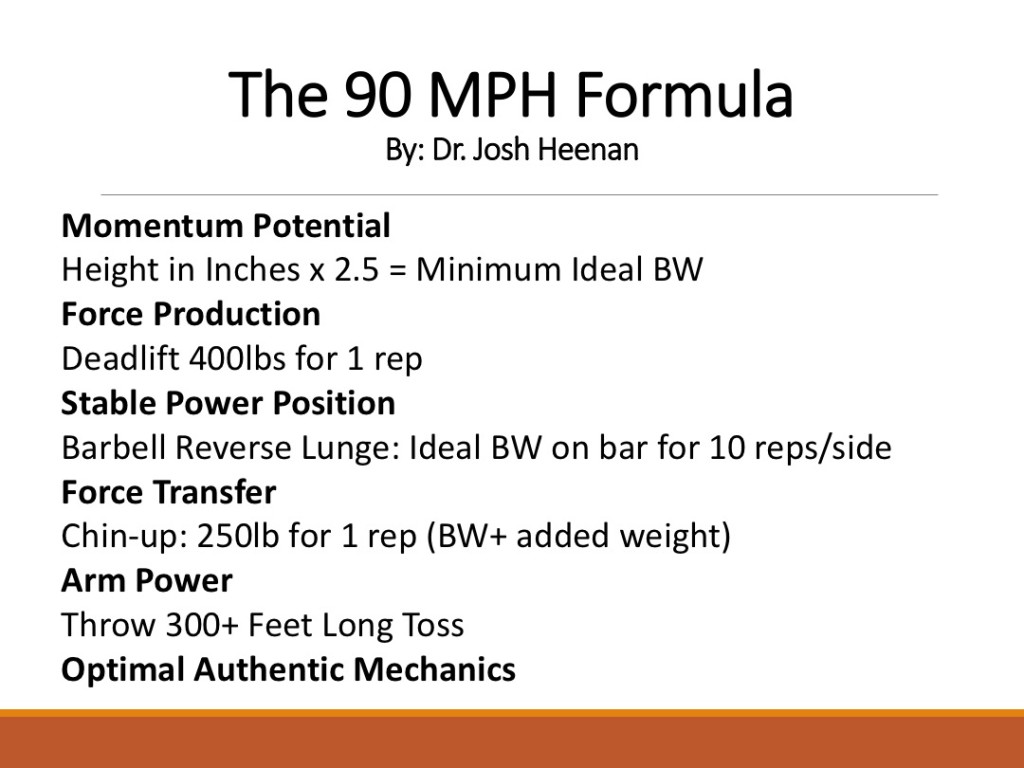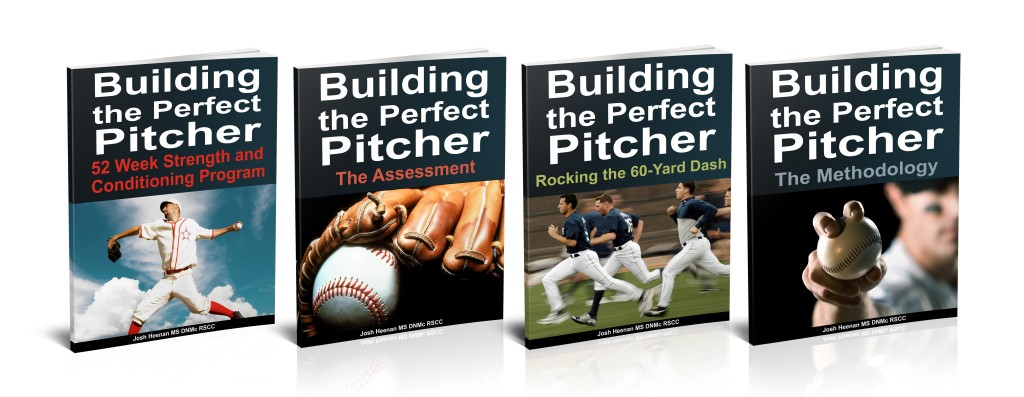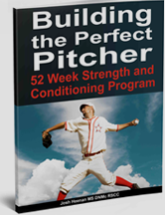Qualities Needed to Throw 90+MPH
If I am a 17-year-old, 165 lb pitcher, and can consistently throw 79-82 MPH for my fastball, if I get up to 200 lb with 12% or less body fat, should I be able to throw in mid 90s or at least the 90s?

Bodyweight has been directly correlated to fastball velocity.
Relationships between ball velocity and throwing mechanics in collegiate baseball pitchers
I touch upon this point here: “As a general rule of thumb, our Sacred Heart pitchers will gain 2-4 mph a season during their 4 years in college. As much as I would love to say it’s just training, there are numerous reasons why we get increased ball velocity each year including mechanical improvement, growth of body due to puberty, increased muscle mass, and improved body awareness/muscular coordination. The interesting trend is that most of our athletes tend to add anywhere from 5-15 lbs of bodyweight each year. Does 5-15lbs = 2-4mph on the mound? Maybe.”
Why All Baseball Players Should Be Using Creatine
With my pitchers, we have the following hierarchy/system:
1) Mechanics Rule All: Increase mechanical efficiency your energy leaks will decrease and velocity will go up.
2) Increase General Strength: Building a foundational base strength is not only performance enhancing, but done properly will decrease the risk of injury.
3) Increase Muscle Mass: More muscle mass, the more potential to apply force.
4) Increase General Force Production (e.g. Power): Allows us to tap into more high threshold motor-units to produce more force and increase IIx muscle fiber.
5) Increase Skill Specific Power: Explosive training in a transverse plane. This could be med ball throws, weighted or under-weighted ball throws, long toss, flat ground or even mound work.
We have had many mid 90MPH pitchers (injury free to boot) as well as some whom have touched 99+MPH. Some of these athletes have gained upwards of 50lbs of very clean weight (still viable abs) in less than a year. Everyone is different based on genetics, work ethic, movement capabilities, diet etc.
If you are mechanically efficient, have relatively long levers and can increase body mass to 200lbs and force production increase proportionally it is very possible. This information as well as programming for this goal is covered in detail in Building the Perfect Pitcher.












Dr. Josh Heenan | Add Muscle Mass, Get Recruited and Drafted 12:02 am on June 10, 2015
[…] bodyweight increases potential force output, which is one of the keys when trying to run faster and throw harder. Not only is added muscle mass important for injury prevention, but it terms of health and […]
Iván 10:32 pm on July 25, 2015
Hi josh
For saying “relatively long levers” how tall does it mean?
Josh Heenan 10:02 pm on September 20, 2015
Ivan, When I refer to longer levers I am speaking more to longer arms to create a longer whip, not necessarily height of the athlete.
Mike King 7:07 pm on September 27, 2015
I was under the impression that the human body was only able to increase muscle mass by about 10lbs per year. You state as much as 50lbs.
Josh Heenan 9:21 pm on October 20, 2015
Mike,
This varies greatly depending on how the age of the athlete, training age of the athlete, nutrition, sleep, etc.
I believe the 10lb a year number you are referring to is a general consensus from the bodybuilding community for someone who has been training for a few years and is struggling to put on weight.
Are You Ready For a College Baseball Showcase? | Dr. Josh Heenan 5:28 pm on May 27, 2016
[…] My 90 MPH formula for pitchers gives a guideline on weight I like to see our pitchers at. It get’s a little trickier for position players, but as a general rule, take your height in inches and multiple it by 2.5 and that is a good baseline for most athletes to start “looking the part”. […]